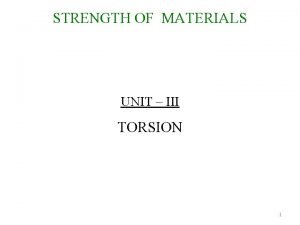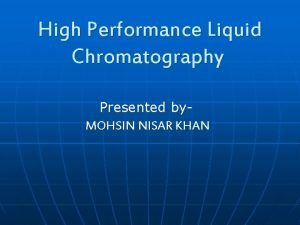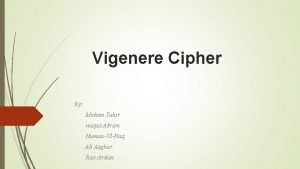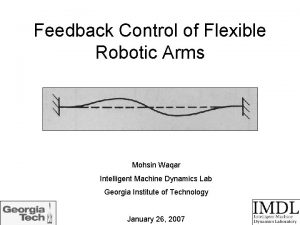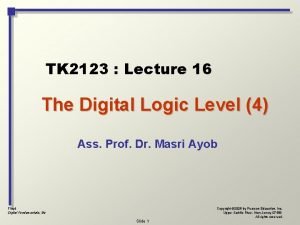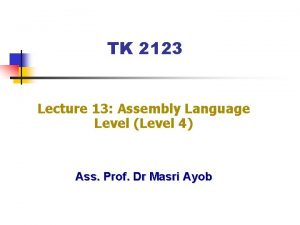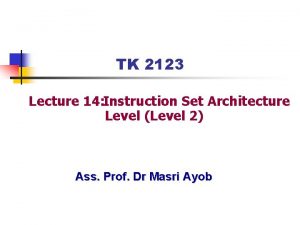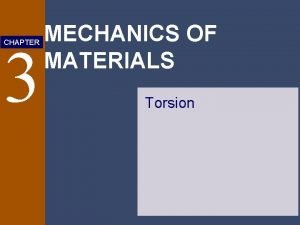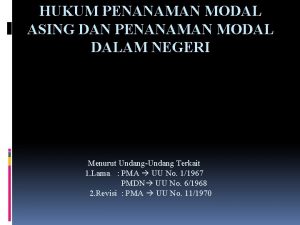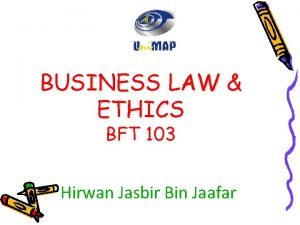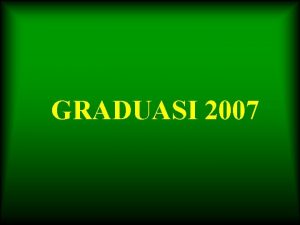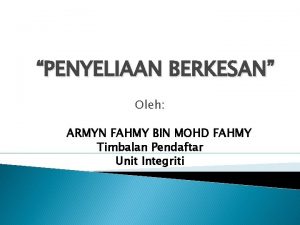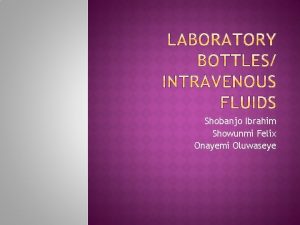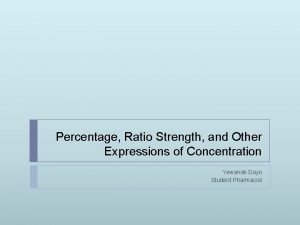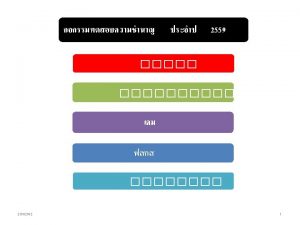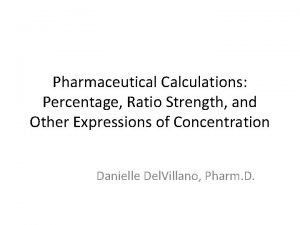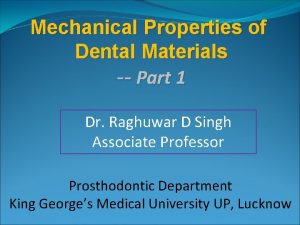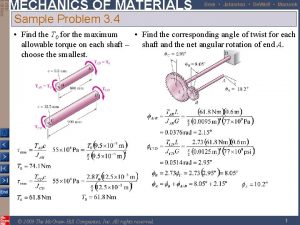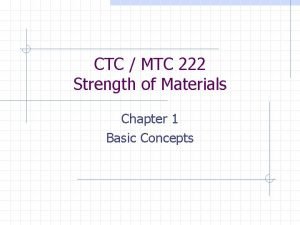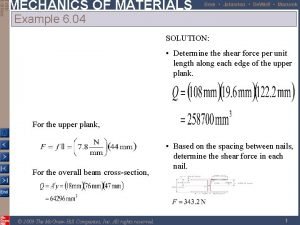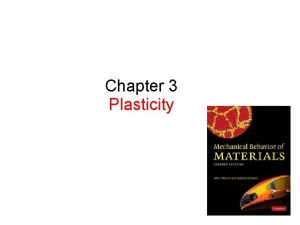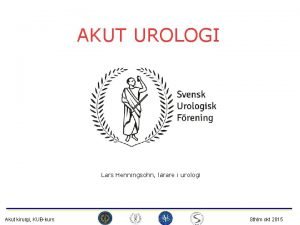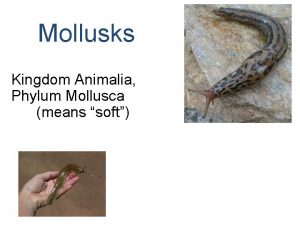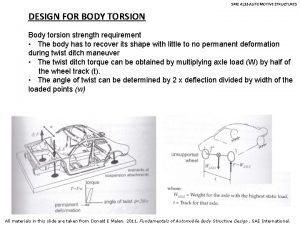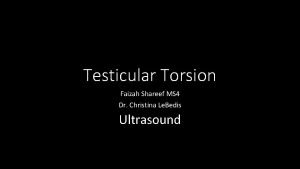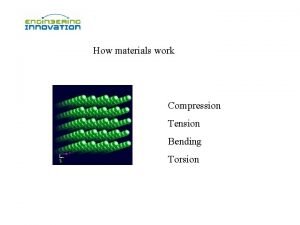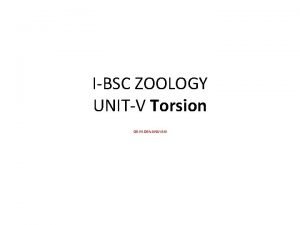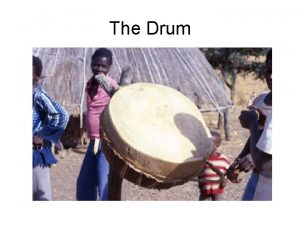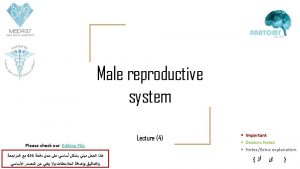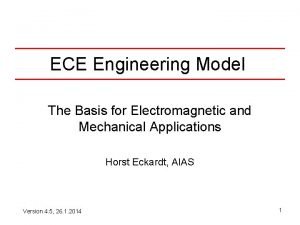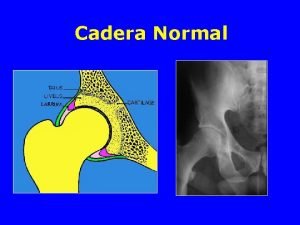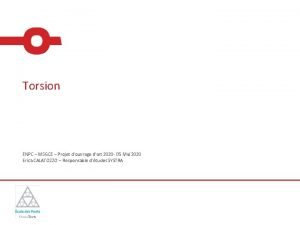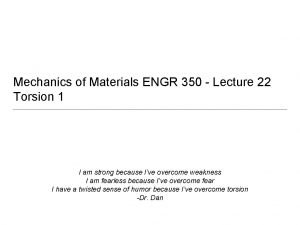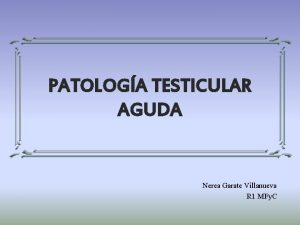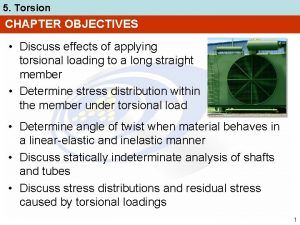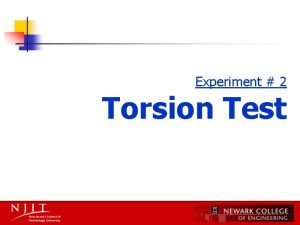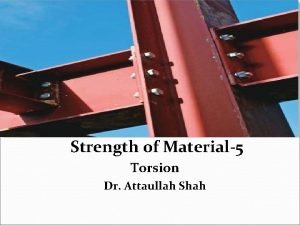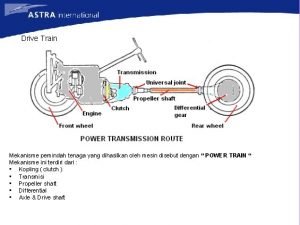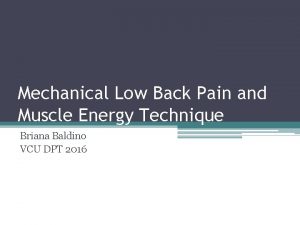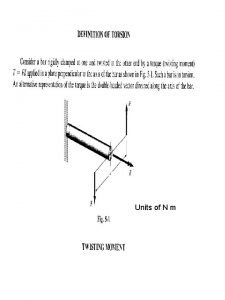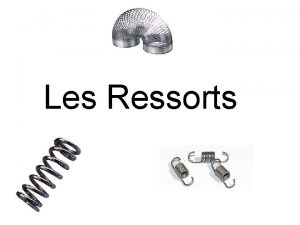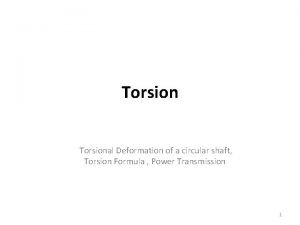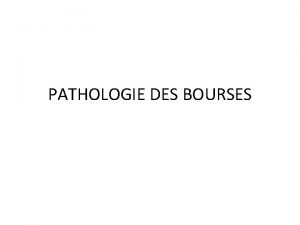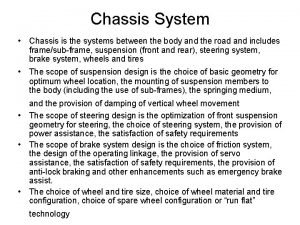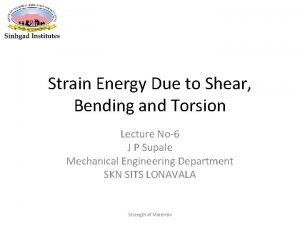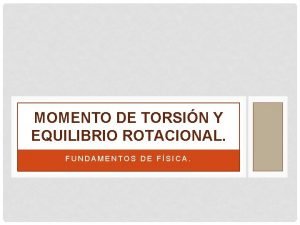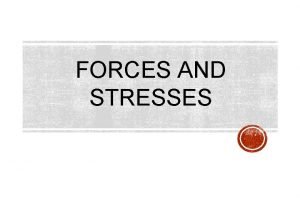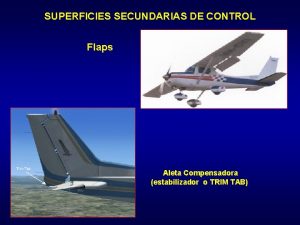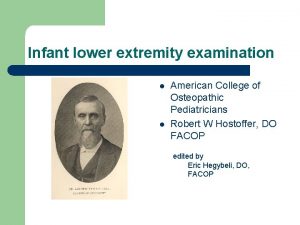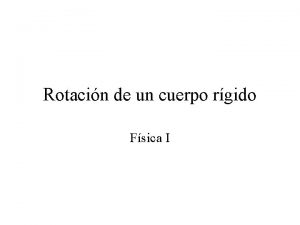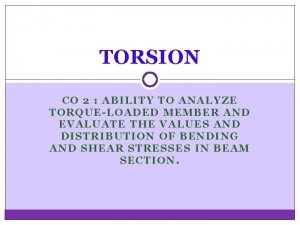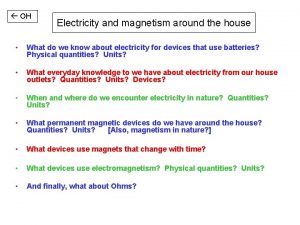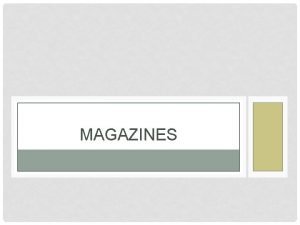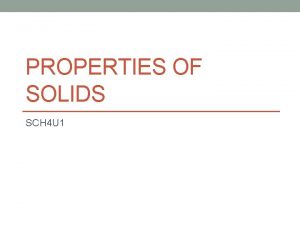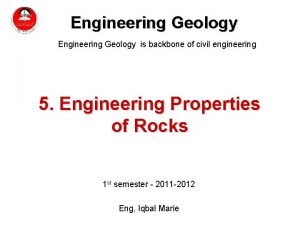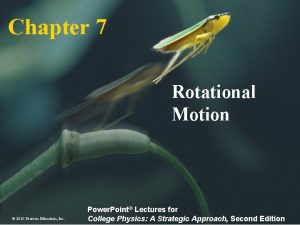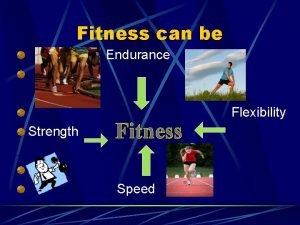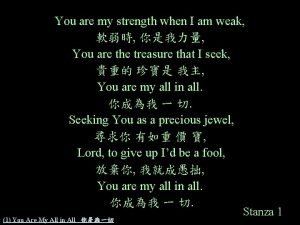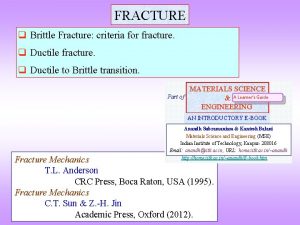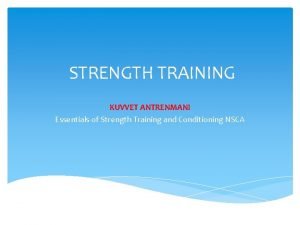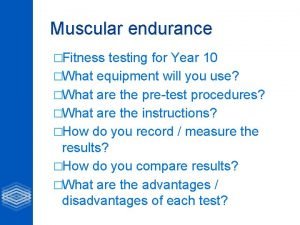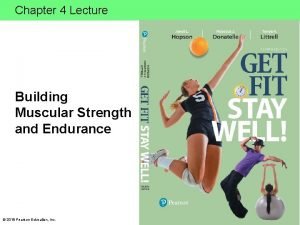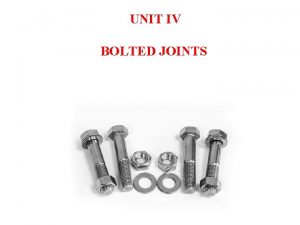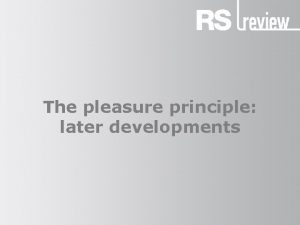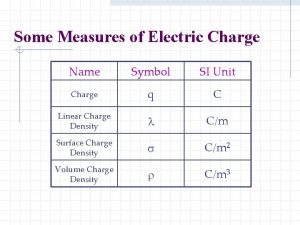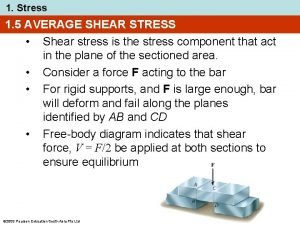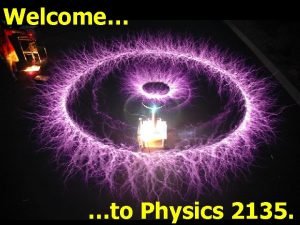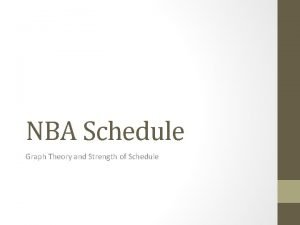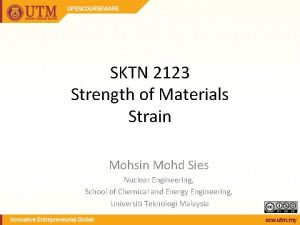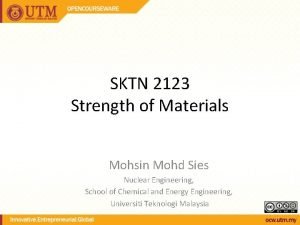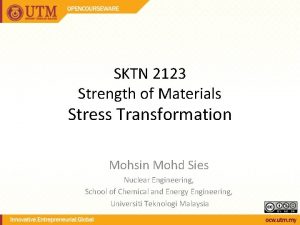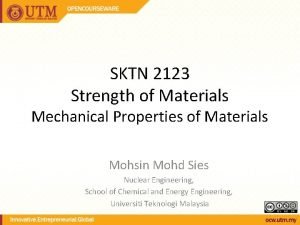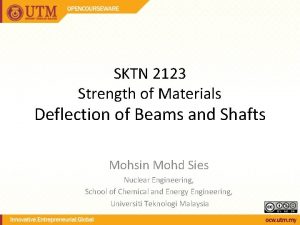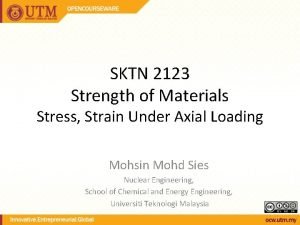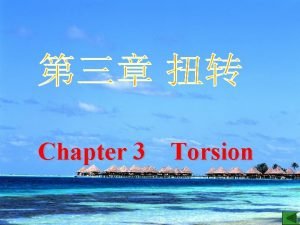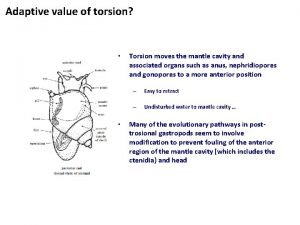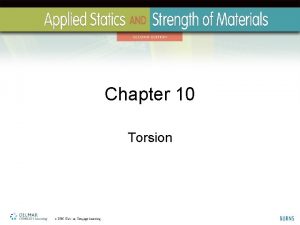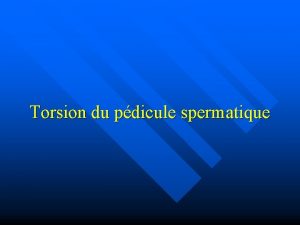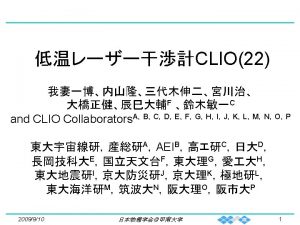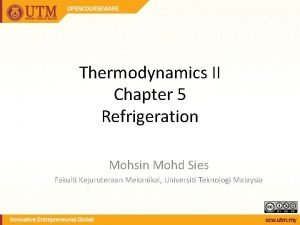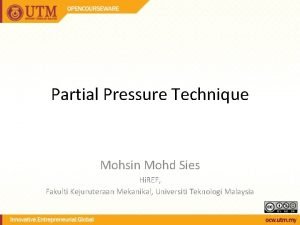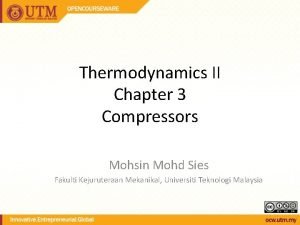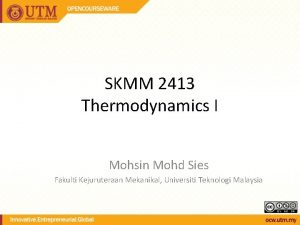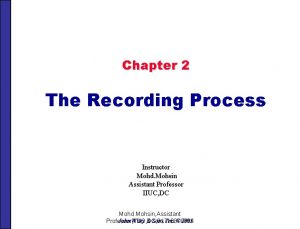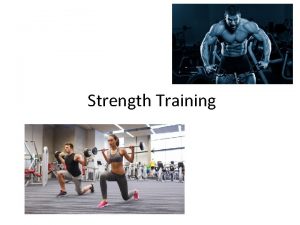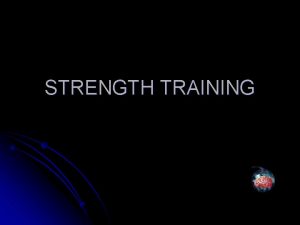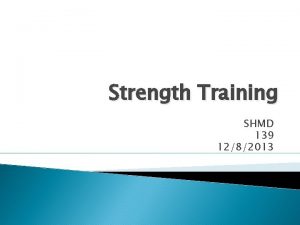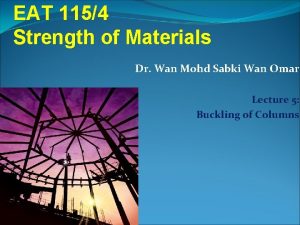SKTN 2123 Strength of Materials Torsion Mohsin Mohd







































































































- Slides: 103

SKTN 2123 Strength of Materials Torsion Mohsin Mohd Sies Nuclear Engineering, School of Chemical and Energy Engineering, Universiti Teknologi Malaysia

CHAPTER OBJECTIVES • Discuss effects of applying torsional loading to a long straight member • Determine stress distribution within the member under torsional load • Determine angle of twist when material behaves in a linear-elastic and inelastic manner • Discuss statically indeterminate analysis of shafts and tubes • Discuss stress distributions and residual stress caused by torsional loadings 2

CHAPTER OUTLINE 1. 2. 3. 4. 5. Torsional Deformation of a Circular Shaft The Torsion Formula Power Transmission Angle of Twist Statically Indeterminate Torque-Loaded Members 6. Stress Concentration 3

5. 1 TORSIONAL DEFORMATION OF A CIRCULAR SHAFT • Torsion is a moment that twists/deforms a member about its longitudinal axis • By observation, if angle of rotation is small, length of shaft and its radius remain unchanged 4

Shaft Deformations From observation, the angle of twist of the shaft is proportional to the applied torque and to the shaft length. When subjected to torsion, every cross section of a circular shaft remains plane and undistorted. Cross-sections for hollow and solid circular shafts remain plain and undistorted because a circular shaft is axisymmetric. Cross-sections of noncircular (nonaxisymmetric) shafts are distorted when subjected to torsion. 5

Shaft Deformations 6

Shearing Strain 7

Shearing Strain 8

Shearing Strain Consider an interior section of the shaft. As a torsional load is applied, an element on the interior cylinder deforms into a rhombus. Since the ends of the element remain planar, the shear strain is equal to angle of twist. It follows that Shear strain is proportional to twist and radius 9

Stresses in Elastic Range Multiplying the previous equation by the shear modulus, From Hooke’s Law, , so The shearing stress varies linearly with the radial position in the section. Recall that the sum of the moments from the internal stress distribution is equal to the torque on the shaft at the section, 10

5. 2 THE TORSION FORMULA • The integral in the equation can be represented as the polar moment of inertia, J, of shaft’s x-sectional area computed about its longitudinal axis max = max. shear stress in shaft, at the outer surface T = resultant internal torque acting at x-section, from method of sections & equation of moment equilibrium applied about longitudinal axis J = polar moment of inertia at x-sectional area c = outer radius of the shaft 11

5. 2 THE TORSION FORMULA • Shear stress at intermediate radial distance, T = J The above two equations are referred to as the torsion formula Used only if shaft is circular, its material homogenous, and it behaves in an linear-elastic manner since the derivation is based on 12

Polar Moment of Inertia Solid shaft • J can be determined using area element in the form of a differential ring or annulus having thickness d and circumference 2 . For this ring, d. A = 2 d 13

Polar Moment of Inertia Solid shaft Hence, J = 2 c 4 J is a geometric property of the circular area and is always positive. Common units used for its measurement are mm 4 and m 4. 14

5. 2 THE TORSION FORMULA Tubular shaft J = 2 (co 4 ci 4) 15

Torsional Failure Modes Ductile materials generally fail in shear. Brittle materials are weaker in tension than shear. When subjected to torsion, a ductile specimen breaks along a plane of maximum shear, i. e. , a plane perpendicular to the shaft axis. When subjected to torsion, a brittle specimen breaks along planes perpendicular to the direction in which tension is a maximum, i. e. , along surfaces at 45 o to the shaft axis. 16

5. 2 THE TORSION FORMULA Absolute maximum torsional stress • Need to find location where ratio Tc/J is maximum • Draw a torque diagram (internal torque vs. x along shaft) • Sign Convention: T is positive, by right-hand rule, is directed outward from the shaft • Once internal torque throughout shaft is determined, maximum ratio of Tc/J can be identified 17

5. 2 THE TORSION FORMULA Procedure for analysis Internal loading • Section shaft perpendicular to its axis at point where shear stress is to be determined • Use free-body diagram and equations of equilibrium to obtain internal torque at section Section property • Compute polar moment of inertia and x-sectional area • For solid section, J = c 4/2 • For tube, J = (co 4 ci 4)/2 18

5. 2 THE TORSION FORMULA Procedure for analysis Shear stress • Specify radial distance , measured from centre of x-section to point where shear stress is to be found • Apply torsion formula, = T /J or max = Tc/J • Shear stress acts on x-section in direction that is always perpendicular to 19

20

21

EXAMPLE 5. 3 Shaft shown supported by two bearings and subjected to three torques. Determine shear stress developed at points A (on the surface) and B (at = 15 mm), located at section a-a of the shaft. 22

EXAMPLE 5. 3 (SOLN) Internal torque Bearing reactions on shaft = 0, if shaft weight assumed to be negligible. Applied torques satisfy moment equilibrium about shaft’s axis. Internal torque at section a-a determined from freebody diagram of left segment. 23

EXAMPLE 5. 3 (SOLN) Internal torque Mx = 0; 4250 k. N·mm 3000 k. N·mm T = 0 T = 1250 k. N·mm Section property J = /2(75 mm)4 = 4. 97 107 mm 4 Shear stress Since point A is at = c = 75 mm B = Tc/J =. . . = 1. 89 MPa 24

EXAMPLE 5. 3 (SOLN) Shear stress Likewise for point B, at = 15 mm B = T /J =. . . = 0. 377 MPa Directions of the stresses on elements A and B established from direction of resultant internal torque T. 25

5. 3 POWER TRANSMISSION • Shafts are used to transmit power are subjected to torques that depends on the power generated by the machine and the angular speed of the shaft. 26

5. 3 POWER TRANSMISSION • Power is defined as work performed per unit of time • Instantaneous power is P = T (d /dt) • Since shaft’s angular velocity = d /dt, we can also express power as P = T Frequency f of a shaft’s rotation is often reported. It measures the number of cycles per second and since 1 cycle = 2 radians, and = 2 f, then power Equation 5 -11 P = 2 f T 27

5. 3 POWER TRANSMISSION Shaft Design • If power transmitted by shaft and its frequency of rotation is known, torque is determined from Eqn 5 -11 • Knowing T and allowable shear stress for material, allow , we can find minimum design c by applying torsion formula, J T c = allow 28

5. 3 POWER TRANSMISSION Shaft Design • For solid shaft, substitute J = ( /2)c 4 to determine c • For tubular shaft, substitute J = ( /2)(co 2 ci 2) to determine co and ci 29

EXAMPLE 5. 5 Solid steel shaft shown used to transmit 3750 W from attached motor M. Shaft rotates at = 175 rpm and the steel allow = 100 MPa. Determine required diameter of shaft to nearest mm. 30

EXAMPLE 5. 5 (SOLN) Torque on shaft determined from P = T , Thus, P = 3750 N·m/s 175 rev 2 rad 1 min = =min 18. 33 1 rad/s 60 s rev ( Thus, P = T , )( ) T = 204. 6 N·m T c 4 J c = 2 c 2 = allow. . . c = 10. 92 mm Since 2 c = 21. 84 mm, select shaft with diameter of d = 22 mm 31

EXAMPLE 5. 6 (SOLN) 32

ANGLE OF TWIST • For constant torque and cross-sectional area:

5. 4 ANGLE OF TWIST • Angle of twist is important when analyzing reactions on statically indeterminate shafts L T(x) = ∫ 0 dx J(x) G = angle of twist, in radians T(x) = internal torque at arbitrary position x, found from method of sections and equation of moment equilibrium applied about shaft’s axis J(x) = polar moment of inertia as a function of x G = shear modulus of elasticity for material 34

5. 4 ANGLE OF TWIST Constant torque and x-sectional area TL = JG If shaft is subjected to several different torques, or xsectional area or shear modulus changes suddenly from one region of the shaft to the next, then apply Eqn 5 -15 to each segment before vectorially adding each segment’s angle of twist: TL = JG 35

5. 4 ANGLE OF TWIST Sign convention Use right-hand rule: torque and angle of twist are positive when thumb is directed outward from the shaft 36

5. 4 ANGLE OF TWIST Procedure for analysis Internal torque Use method of sections and equation of moment equilibrium applied along shaft’s axis If torque varies along shaft’s length, section made at arbitrary position x along shaft is represented as T(x) If several constant external torques act on shaft between its ends, internal torque in each segment must be determined and shown as a torque diagram 37

5. 4 ANGLE OF TWIST Procedure for analysis Angle of twist When circular x-sectional area varies along shaft’s axis, polar moment of inertia expressed as a function of its position x along its axis, J(x) If J or internal torque suddenly changes between ends of shaft, = ∫ (T(x)/J(x)G) dx or = TL/JG must be applied to each segment for which J, T and G are continuous or constant Use consistent sign convention for internal torque and also the set of units 38

39

40

41

42

43

44

45

5. 5 STATICALLY INDETERMINATE TORQUE-LOADED MEMBERS • A torsionally loaded shaft is statically indeterminate if moment equation of equilibrium, applied about axis of shaft, is not enough to determine unknown torques acting on the shaft 46

5. 5 STATICALLY INDETERMINATE TORQUE-LOADED MEMBERS • From free-body diagram, reactive torques at supports A and B are unknown, Thus, Mx = 0; T TA TB = 0 Since problem is statically indeterminate, formulate the condition of compatibility; end supports are fixed, thus angle of twist of both ends should sum to zero A/B = 0 47

5. 5 STATICALLY INDETERMINATE TORQUE-LOADED MEMBERS • Assume linear-elastic behavior, and using loaddisplacement relationship, = TL/JG, thus compatibility equation can be written as TA LAC TB LBC =0 JG JG Solving the equations simultaneously, and realizing that L = LAC + LBC, we get LBC TA = T ( L ) LAC TB = T( L ) 48

5. 5 STATICALLY INDETERMINATE TORQUE-LOADED MEMBERS Procedure for analysis Equilibrium • Draw a free-body diagram • Write equations of equilibrium about axis of shaft Compatibility • Express compatibility conditions in terms of rotational displacement caused by reactive torques • Use torque-displacement relationship, such as = TL/JG • Solve equilibrium and compatibility equations for unknown torques 49

EXAMPLE 5. 11 Solid steel shaft shown has a diameter of 20 mm. If it is subjected to two torques, determine reactions at fixed supports A and B. 50

EXAMPLE 5. 11 (SOLN) Equilibrium From free-body diagram, problem is statically indeterminate. Mx = 0; TB + 800 N·m 500 N·m TA = 0 Compatibility Since ends of shaft are fixed, sum of angles of twist for both ends equal to zero. Hence, A/B = 0 51

EXAMPLE 5. 11 (SOLN) Compatibility The condition is expressed using the loaddisplacement relationship, = TL/JG. . 1. 8 TA 0. 2 TB = 750 Solving simultaneously, we get TA = 345 N·m TB = 645 N·m 52

5. 8 STRESS CONCENTRATION • Three common discontinuities of the x-section are: a) is a coupling, for connecting 2 collinear shafts together b) is a keyway used to connect gears or pulleys to a shaft c) is a shoulder fillet used to fabricate a single collinear shaft from 2 shafts with different diameters 53

5. 8 STRESS CONCENTRATION • Dots on x-section indicate where maximum shear stress will occur • This maximum shear stress can be determined from torsional stress-concentration factor, K 54

5. 8 STRESS CONCENTRATION • K, can be obtained from a graph as shown • Find geometric ratio D/d for appropriate curve • Once r/d calculated, value of K found along ordinate • Maximum shear stress is then determined from max = K(Tc/J) 55

5. 8 STRESS CONCENTRATION IMPORTANT • Stress concentrations in shafts occur at points of sudden x-sectional change. The more severe the change, the larger the stress concentration • For design/analysis, not necessary to know exact shear-stress distribution on x-section. Instead, obtain maximum shear stress using stress concentration factor K • If material is brittle, or subjected to fatigue loadings, then stress concentrations need to be considered in design/analysis. 56

EXAMPLE 5. 18 Stepped shaft shown is supported at bearings at A and B. Determine maximum stress in the shaft due to applied torques. Fillet at junction of each shaft has radius r = 6 mm. 57

EXAMPLE 5. 18 (SOLN) Internal torque By inspection, moment equilibrium about axis of shaft is satisfied. Since maximum shear stress occurs at rooted ends of smaller diameter shafts, internal torque (30 N·m) can be found by applying method of sections 58

EXAMPLE 5. 18 (SOLN) Maximum shear stress From shaft geometry, we have D 2(40 mm) d = 2(20 mm) = 2 6 mm) r = 2(20 mm) = 0. 15 d Thus, from the graph, K = 1. 3 max = K(Tc/J) =. . . = 3. 10 MPa 59

EXAMPLE 5. 18 (SOLN) Maximum shear stress From experimental evidence, actual stress distribution along radial line of x-section at critical section looks similar to: 60

CHAPTER REVIEW • • Torque causes a shaft with circular x-section to twist, such that shear strain in shaft is proportional to its radial distance from its centre Provided that material is homogeneous and Hooke’s law applies, shear stress determined from torsion formula, = (Tc)/J Design of shaft requires finding the geometric parameter, (J/C) = (T/ allow) Power generated by rotating shaft is reported, from which torque is derived; P = T 61

CHAPTER REVIEW • Angle of twist of circular shaft determined from L T(x) dx =∫ 0 JG • If torque and JG are constant, then TL = JG • For application, use a sign convention for internal torque and be sure material does not yield, but remains linear elastic 62

CHAPTER REVIEW • • • If shaft is statically indeterminate, reactive torques determined from equilibrium, compatibility of twist, and torque-twist relationships, such as = TL/JG Solid noncircular shafts tend to warp out of plane when subjected to torque. Formulas are available to determine elastic shear stress and twist for these cases Shear stress in tubes determined by considering shear flow. Assumes that shear stress across each thickness of tube is constant 63

CHAPTER REVIEW • • • Shear stress in tubes determined from = T/2 t. Am Stress concentrations occur in shafts when xsection suddenly changes. Maximum shear stress determined using stress concentration factor, K (found by experiment and represented in graphical form). max = K(Tc/J) If applied torque causes material to exceed elastic limit, then stress distribution is not proportional to radial distance from centerline of shaft 64

CHAPTER REVIEW • • Instead, such applied torque is related to stress distribution using the shear-stress-shear-strain diagram and equilibrium If a shaft is subjected to plastic torque, and then released, it will cause material to respond elastically, causing residual shear stress to be developed in the shaft 65

Question 1 • The shaft of the pulley assembly is to be redesigned. Knowing that the allowable shearing stress in each shaft is 60 MPa, determine the smallest allowable diameter of a) Shaft AB, b) Shaft BC 66

Question 2 • The two solid shafts and gears shown are used to transmit 12 k. W from the motor at A operating at a speed of 1260 rpm, to machine tool at D. Knowing that each shaft has a diameter of 25 mm, determine the maximum shearing stress a) in shaft AB, b) in shaft CD 67




































 Mohd ridzal bin mohd sheriff
Mohd ridzal bin mohd sheriff Torsional load
Torsional load Mohsin nisar
Mohsin nisar Vigenere cipher
Vigenere cipher Dr mohsin waqar
Dr mohsin waqar Dr mohsin butt
Dr mohsin butt Tk 2123
Tk 2123 2123
2123 Tk 2123
Tk 2123 Tk 2123
Tk 2123 Revelation 2123
Revelation 2123 Program flow
Program flow 2123
2123 Shear stress hollow shaft
Shear stress hollow shaft Wan mohd faizal
Wan mohd faizal Mohd talib latif
Mohd talib latif Prof mohd faiz
Prof mohd faiz I am a bird by kathrina
I am a bird by kathrina Sarah binti puteh
Sarah binti puteh Putra mohd aidil rizal
Putra mohd aidil rizal Contract first
Contract first Gayatiri
Gayatiri Armyn fahmy mohd fahmy
Armyn fahmy mohd fahmy Syahid mohd zain
Syahid mohd zain Prof nazari ismail
Prof nazari ismail Half strength darrow's solution
Half strength darrow's solution Percentage strength w/w
Percentage strength w/w Steel bar
Steel bar How to calculate ratio strength in pharmacy
How to calculate ratio strength in pharmacy Flexibility in dental materials
Flexibility in dental materials Beer and johnston
Beer and johnston Strength of materials chapter 1
Strength of materials chapter 1 Mechanics of materials
Mechanics of materials Strength of materials
Strength of materials Adopting and adapting teaching materials
Adopting and adapting teaching materials Natural materials and man made materials
Natural materials and man made materials Direct materials budget with multiple materials
Direct materials budget with multiple materials Useful materials
Useful materials Man made materials
Man made materials Torsion field tesla
Torsion field tesla Epididymit internetmedicin
Epididymit internetmedicin Mollusca kingdom
Mollusca kingdom Body torsion
Body torsion Torsion shear stress
Torsion shear stress Christina shareef
Christina shareef Tension compression shear torsion bending
Tension compression shear torsion bending What is torsion in zoology
What is torsion in zoology Torsion field
Torsion field Cremasteric reflex nerve
Cremasteric reflex nerve Torsion field
Torsion field Rotacion interna femur
Rotacion interna femur Torsion uniforme
Torsion uniforme Torsion example problems
Torsion example problems Signo punto azul torsion testicular
Signo punto azul torsion testicular Cuando, cuando
Cuando, cuando Torsion
Torsion Objective of torsion experiment
Objective of torsion experiment Beam loaded as shown in fig. p-428
Beam loaded as shown in fig. p-428 Gouttière de torsion humérale
Gouttière de torsion humérale Fungsi torsion damper
Fungsi torsion damper Left on left sacral torsion
Left on left sacral torsion Twisting moment
Twisting moment Hot pressure welding
Hot pressure welding Raideur ressort flexion
Raideur ressort flexion Shaft torsion formula
Shaft torsion formula Torsion d'hydatide adulte
Torsion d'hydatide adulte Sertoli cell only syndrome treatment
Sertoli cell only syndrome treatment Roll center solid axle
Roll center solid axle Strain energy due to torsion for hollow shaft
Strain energy due to torsion for hollow shaft Momento de torsión y equilibrio rotacional
Momento de torsión y equilibrio rotacional Tension, compression, shear torsion worksheet
Tension, compression, shear torsion worksheet Estabilizadores de aleta
Estabilizadores de aleta Tibial torsion and femoral anteversion
Tibial torsion and femoral anteversion Aceleracion angular
Aceleracion angular Torsion testiculaire signe
Torsion testiculaire signe Torsional shear stress formula
Torsional shear stress formula Torsion balance
Torsion balance Reading to gain knowledge
Reading to gain knowledge Ionic bond strength
Ionic bond strength Which rock possesses very high compressive strength
Which rock possesses very high compressive strength 2010 pearson education inc answers
2010 pearson education inc answers Be endurance
Be endurance Weakness of ethnography
Weakness of ethnography God gives me strength
God gives me strength You are my strength when i was weak
You are my strength when i was weak Fracture strength formula
Fracture strength formula Weakness of university
Weakness of university Ultimate tensile strength
Ultimate tensile strength Strength and weakness of television
Strength and weakness of television Essentials of strength training and conditioning
Essentials of strength training and conditioning Muscular strength fitness test
Muscular strength fitness test Venn diagram of muscular strength and endurance
Venn diagram of muscular strength and endurance Dipole-dipole interaction example
Dipole-dipole interaction example Bolt of uniform strength
Bolt of uniform strength In resume strength
In resume strength Strength of utilitarianism
Strength of utilitarianism Gauss law symbol
Gauss law symbol Narritive text
Narritive text Shear strength examples
Shear strength examples Pulse strength scale
Pulse strength scale Plyometrics disadvantages
Plyometrics disadvantages Electric field units
Electric field units Nba schedule difficulty
Nba schedule difficulty Physical strength tends to peak in
Physical strength tends to peak in

